
Helpful_Hints_for_IELTS
.pdf
Reading Test Hints
Step 6. Next, work out the part of speech for the gap. Do so, by closely examining the words that come both before and after the gap.
Step 7. Then search only through the words in the list that can function as the same part of speech as the missing gap word. Look for all the possible answers that you think could fit in the gap. Make no final choices just yet. There are usually two or three similar words that could be correct. Write them all above the gap.
Step 8. Refer to the reading passage to help you choose possible answers for the gap if the gapfill text is a summary of part or all of the passage.
Step 9. Complete steps 5 to 8 for each gap in the task.
Step 10. Choose a final answer from the words chosen for each gap. Cross off the incorrect answers, do not write them on the Answer Sheet, for you will not be correct if you give more than one answer.
Reading Gapfill Method - for Type 2
Step 1. First, read the instructions. You need to know if the gapfill text is a summary of part or of the whole of the reading passage.
Step 2. Next, read the example for information about the topic of the summary.
Step 3. Then, scan or skim the gapfill text quickly for a general understanding of the text. Step 4. Now locate the answer to the example in the reading passage.
Step 5. "Place" the summary across the passage to find out where the answers to questions may be found. It is often possible to divide the summary into parts that correspond to various paragraphs or sections of the passage. In this way, it is possible to shorten the area
|
of the passage in which to look for particular answers. (See also Reading Hint 47.) |
Step 6. |
Now turn to the first gap in the task, and try to work out the full meaning of the sentence |
|
it is within. You may need to read the sentence before and after, too. |
Step 7. |
Next, work out the part of speech for that gap. Do so, by closely examining the words that |
|
come both before and after the gap. |
Step 8. |
Then, examine the keywords/phrases to look for in the passage, and locate them in the |
|
passage. (See also IELTS Test - Basic Hint 10 and Reading Hint 57.) |
Step 9. |
Choose the word that best suits the gap, remembering that the words you find in the |
|
passage may not be in the word form you require. You may need a noun, but the word |
|
given in the passage might be an adjective. In which case, you must change the form of the |
|
word to the word form required in the gapfill text. |
Step 10. Complete steps 6 to 9 for each gap in the task.
Turn the page upside down to see the answers to the exercise given on page 40:
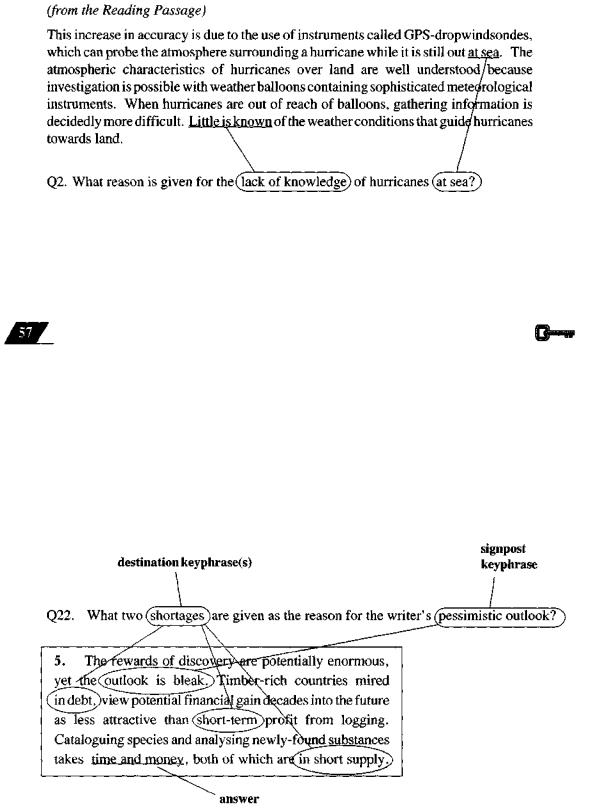
Reading Test Hints
FIND SHORT SENTENCES WITHIN PARAGRAPHS
It is important to develop the ability to "see" a short question sentence within a longer sentence or within a paragraph. The sentences forming the questions usually contain summarised information, and are, therefore, almost always shorter than the sentence or sentences in the reading passage which contain the corresponding information.
O Look at Question 2 in Reading Test Two:
It takes practice to "see" the information contained in the sentence of a question within the extra wording in the reading passage, but it is an important skill. Note that sometimes the information in the sentence forming the question is not given in the same order as the same information in the passage. Nonetheless, the ability to "see" a shorter sentence within longer sentences is essential when trying to locate the correct answer within a large piece of text. (See also Reading Hint 48.)
CONSIDER THE LOCATION OF THE ANSWER
You mustbe willing to search both before and after the keywords/phrases. The distance ofan answer from the keyword/phrase can vary considerably in the Reading Test, but the answer is usually found in the same paragraph as the keyword/phrase with which it is connected.
In this book, certain keywords and phrases in the questions (and passages) are referred to as signpost keywords/phrases because they point to paragraphs in the passage where answers are likely to be found. Keywords more closely connected with the answer are referred to as destination keywords/ phrases. (See also IELTS Test - Basic Hint 10.)
D Look at Question 22 in Reading Test Three:
45

101 Helpful Hints for IELTS
Notice that sometimes the signpost keyword/phrase can be found long before the answer in a passage. It can also come after the answer.
Note also that when the keywords/phrases in the question are found in the passage they may not be written exactly in the same way. The corresponding keywords/phrases in the passage may contain substituted words, or they may be phrases with a similar meaning. (See also Reading Hint 49.)
Nevertheless, reference to the keywords/phrases in a question can always be found somewhere in the reading passage, and most often in the same paragraph. (See also Reading Hints 46 and 56.)
CHARTS AND TABLES IN QUESTION TASKS
Keywords, keyphrases, and examples are also features ofquestions within charts and tables. Do not overlookthe words already contained in a chart ortable in yourhurry to find the answerin the reading passage. These words can also be considered as 'examples'.
• Look at Questions 1 - 3 in Reading Test One:
The keywords/phrases for Question 1 are the headings for the row and column in which the question is found {"type of English in course books used in this country" in "Britain" ). Similarly, the keywords/phrases for Questions 2 and 3 are the appropriate row and column headings.
The particular examples for Question 1 are "American " and "not given " because they are in the same row as the question. Similarly, the example words for Questions 2 and 3 are found in the same row as the questions.
Remember that in charts and tables, the example words in a row not only help you answer the question, they may also be words or phrases within a particular word set.
e.g. The type of English in course books used in the U.S. is given as "American". Question 1 asks for the type of English in course books used in Britain. Referring to the passage, the answer is found to be "British", which is within the word set "nationality".
Be aware that it is possible for the answer to a question in a chart or table to be a word already given somewhere in the same row or column.
Remember to examine all the words andphrases contained in a chart or table
46
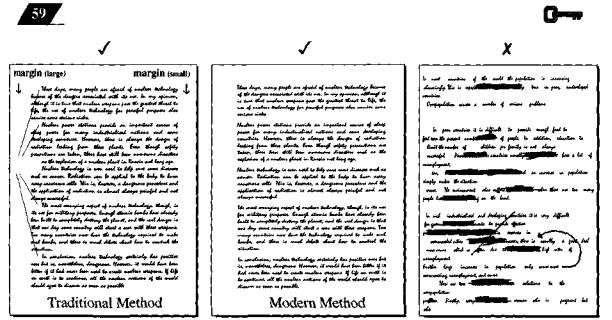
Writing Test Hints
WRITING TEST HINTS
A BASIC UNDERSTANDING
PAY ATTENTION TO THE PRESENTATION
// ^
identati >n.s—
While it is true that the IELTS Writing Test is not marked for neatness, there is the psychological aspect to consider when you are trying to impress an examiner. You are not there in person to present your work, so always aim to make your writing look presentable on the page.
10 Point Guide to Presentation and Layout
i.There is no need for a title in the IELTS test task writings, and do not rewrite the question task,
ii.Use left and right margins as in the two good examples above.
iii.Use either indentations for the, first line of each paragraph (traditional method) or a blank line
between paragraphs (modern method), but do not mix both methods.
iv.Do not use double spacing, that is, do not leave a blank line between each line of writing.
v.Use all the line - write from the very edge of the left margin all the way to the very edge of the right margin. This is true for every line, except where the line is short, or where the last word will not fit between the margins. In the latter case, do not continue into the margin area. Start on a new line with the word that is too large.
vi.Do not split words. Rather than memorise complex rules for splitting words, do not split them.
vii.Write between 10-12 words per line. This will prevent you writing words too large and with gaps larger than a single letter or two between words. It will also make it simpler for you to quickly estimate how many words you have written in the test.
viii.7iu cuMive mttOtfy, t&at U, mti the letter jowed toqd&vi.
Cursive writing makes your work look more mature, if it can be read easily. The non-cursive writing of some candidates can look immature. Since first impressions are important, impress the examiner by writing the way educated English-speaking adults usually write in English.
ix.Write in a thick, not fine, pen, and consider writing in blue ink. Why? From a psychological point of view, a thick pen makes a stronger impression. Similarly, written work in pencil looks weak and impermanent. Pencil users waste time erasing, and sharpening or pumping the lead. Blue ink, is more soothing and pleasant to look at than black. Leave behind a positive impression.
x.If you make a mistake, simply cross out the errer error with one line. There is no penalty for crossing out. Besides, it shows the examiner that you are capable of error correction.
47
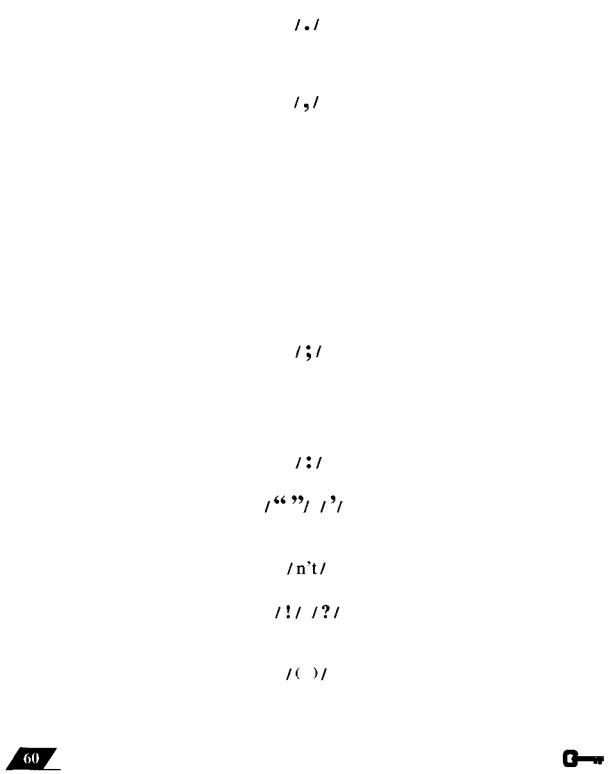
101 Helpful Hints for IELTS
Quick Punctuation Guide
1.Use full-stops only at the end of a sentence. Begin sentences with a capital letter. Proper nouns also require capital letters.
2.Use commas to separate parts of a sentence to avoid any confusion with meaning. Additional information is enclosed within commas.
A comma is used after most connectives (linking words), and usually before and after a connective in mid-sentence. Commas separate clauses in most conditional sentences.
3.Semi-colons are usedto separate subgroups within lists, but more often to join two independent clauses that are grammatically complete but closely related. However, in the latter case, you can always use a full-stop instead.
4.You may use a colon if you need to draw attention to what is to follow.
5.Use quotation marks for quotes and titles. Apostrophes show possession or contraction.
6.Do not use contractions in formal writing. Use the full form instead.
7.Do not use exclamation marks in the IELTS Writing Test, and avoid asking questions.
8.Brackets are useful, especially for quoting statistics in Writing Task 1, but do not overuse.
e.g. the Eiffel Tower
the University ofNorth London
e.g. The pollution of rivers, which is often caused by chemical waste and fertiliser, is causing enormous problems for fishermen, especially in Britain.
(The comma after 'fishermen' ensures that 'especially' connects with 'Britain' not 'fishermen'.)
e.g. Therefore, the use of chemicals on farms should be better controlled. However, even if such laws were passedtomorrow, mostriverswould take years to recover.
e.g. Chemical waste from factories is still drained into river systems; it is hard to believe that this practice is still allowed by law in some areas.
e.g. The environment is important for the following reasons:
e.g. The Daily Express farmers' profits there's
e.g. don't, shouldn't, can't, it's etc.
e.g. the total number of cars (10)
UNDERSTAND THE QUESTION TASK
It is important to fully understand the task you must perform in the IELTS Writing Test. The Golden Rule is that you must be sure of the type of answer you are required to give to the examiners, and what you must do with that information to give the answer accurately. (See IELTS Test - Basic Hint 7.)
You will probably receive a lower Writing Test Band Score if you fail to ...
... write what you are required to write, and with at least the minimum number of words requested per task. You may be asked to write an essay, report, or description etc. There is no maximum word limit, but there is a limit to the amount ofspace in which to write your answers.
48
Writing Test Hints
... write directly on the given topic. Once you have accurately determined what the topic and the topic question is, keep to the topic throughout the entire piece of writing.
... write for the intended reader. This means you should write your answer in a formal academic style. For instance, if you are asked to write for a university lecturer, your answer must be written in the formal style expected.
It is inappropriate to write in note form in the IELTS test (unless specifically requested).
It is inappropriate to use colloquial or slang words or expressions in formal writing. Also, you should avoid using the word "thing ", or words containing the word "thing ", such as "something" or "anything". Use more descriptive words instead.
It is not generally acceptable to use "etc." or "and so on" in formal writing. Instead, make a list of at least 3 examples of what you wish to say, and punctuate as follows:
e.g. " ... in the water, air and soil " but |
" ... they satfor the test, passed, and |
|
failed to use their qualifications. " |
Note that the comma after the second last item is usually included only if there might otherwise be an unintended confusion of meaning, as in the second example above.
... write what is expected. If the task includes the words "(write from) your own experience", it means from the knowledge you have of a particular topic, and does not usually mean writing about your personal experiences (unless specifically requested).
e.g. "Language-learning overseas is an extremely difficult process."
not "When I was in England, Ifound learning a language to be very difficult."
... write all that is requested in the task. For instance, if you are asked to give recommendations or advice, make sure that you do. Also, avoid making statements that are too general, too simple, and too obvious. Youranswer should be written in some detail.
The Topic and The Topic Question
It is important to know precisely what the topic is, and what the question is concerning that topic.
Look at the circled topics of Task 2 in Writing Tests One and Two:
TEST (Studying the English language in an English-speaking country) is the best but not the only
0NE |
way to learn the language. |
|
Do you agree or disagree with this statement? |
TEST |
The world is experiencing a dramatic increase in population. This is causing problems not |
TW0 |
only for poor, undeveloped countries, but also for industrialised and developing nations. |
|
Describe some of the problems that (overpopulation) causes, and suggest at least one |
|
possible solution. |
The Test One topic is "studying the English language in an English-speaking country". The question asks you to consider the alternative: studying English in a non-English-speaking country. Failure to compare the advantages and disadvantages ofboth ways will most likely mean a lower score.
The topic in Test Two is "overpopulation". If you wrote at length about overpopulation not being a problem, it would be irrelevant. In addition, you would score less if you failed to offer a solution.
49
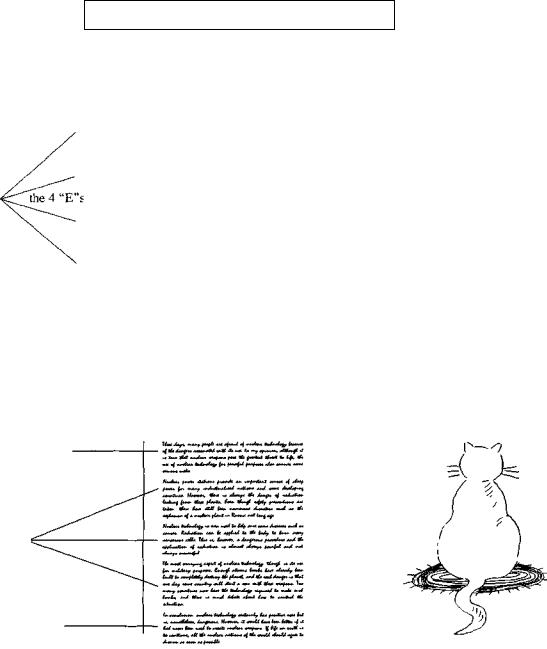
101 Helpful Hints for IELTS
USE THE "THREE-PART" WRITING APPROACH
Model sentences, paragraphs, essays and reports each consist of 3 basic parts. Even words can consist of three parts:
A Word:
• |
(prefix) |
+ stem |
+ |
(suffix) |
|
|
|
|
|
A Basic Sentence:
subject + verb + complement
A Typical Paragraph:
Topic sentence - states or refers to the main idea behind the paragraph
- Explanation - to make the topic sentence (or key vocabulary within the topic sentence) clearly understood
- Evidence - to offer proof of what you are saying as part of an argument
-Example(s) - to further illustrate the point you are making
-Extra detail - to substantiate the main point of the paragraph
Summary sentence - concludes the paragraph (optional)
The topic sentence is usually, but not always, the first sentence ofthe paragraph. (See Reading Hint 42.)
Note also that the "body" of the paragraph consists of one or more, but not necessarily all, of the 4 "E"s (explanation, evidence, example(s), and extra detail).
A Typical Essay:
Introduction |
Introduction |
Body |
Body |
Conclusion |
Conclusion |
You might like to think of an essay, a report or any formal piece of writing, as being written with the 3-part shape of a cat in the writer's mind. Note the relative sizes of the parts of the cat.
Note that you do not need to place "ears" on the "cat" in the IELTS Writing Tasks. In other words you do not need a title. This is true of the IELTS test, but not of most essays at tertiary level.
50

Writing Test Hints
WRITE INTERESTING SENTENCES
Beware ofsentences that are too simple and too obvious. Good sentences inform the reader, and are, therefore, interesting to read. However, do not write unnecessarily complex sentences, and do not use a word unless you are quite sure of what it means. It is better to use simple words correctly than complex words incorrectly. Consider the following topic sentence:
"There are many rich and poor countries in the world".
It makes a statement that is much too general in content and is obviously true. Although no-one would argue with the truth of the statement, it is not an informative or interesting sentence to read.
"There' are many more poor countries than rich countries, yet the latter are in possession of almost all of the world's economic wealth".
Note that the second sentence answers at least 3 wh/how questions:
Which countries? |
... rich and poor |
How many (rich and poor) countries? |
... many more poor countries than rich |
How much (do the rich countries own)? ... almost all of the world's economic wealth.
Who? What? Where? When? Why? Which? How many? How much? How often?
'Answers' to wh/how questions add interest to your sentences.
Try to include the answer to at least 3 wh/how questions in your sentences
IMPROVE YOUR WRITING
 Itis not the aim ofthis book to provide a detailed course in writing. However, there is a 3-part method you can use to increase your writing power gradually. It might seem simple, but it was the method you used to learn to write in your own language.
Itis not the aim ofthis book to provide a detailed course in writing. However, there is a 3-part method you can use to increase your writing power gradually. It might seem simple, but it was the method you used to learn to write in your own language.
1. Read
Yes! Read other people's well-written English. That is why people write in the first place - to be read. The more you read, the more you will understand of the structure of English sentences. (See also IELTS Test - Basic Hints 2 and 4.)
2. Copy
Ifyou should do more reading in English, / why not assist your writing / at the same time? / Simply copy / passages of well-written English / onto paper. / Concentrate as you copy, / thinking about the structure ofthe sentences / as you write. / Try to remember/ the groups ofwords you copy / in natural phrases / as shown in this paragraph. / Try to remember / more and more words at a time / before checking / to make sure you have copied accurately. / (See IELTS Test - Basic Hint 5.)
3. Write
There is no substitute for practice. The more you write in English, the easier it will become, and the more accurate your sentences will be. Naturally, it is useful to have your sentences checked by a trained English language teacher, but ifthat cannot be done, do not worry. If you copy well-written English paragraphs while you are also trying to improve your own sentences, your sentence structures will certainly improve. A large number of exercises designed to improve your writing skills for the IELTS test is included in the companion book '202 Useful Exercises for IELTS'.
51

101 Helpful Hints for IELTS
6 COMMON QUESTIONS ABOUT THE WRITING TEST
"What happens ifI don't finish the writing tasks in the given time?"
You will be penalised because you will not have fulfilled the requirements of each task. It is, therefore, most important to practise writing for speed a long time before the day of the test, so that you can be sure of finishing in the required time. It is wise to spend only the advised amount of time suggested for each task (20 minutes on Writing Task 1 and 40 minutes on Writing Task 2).
"IfI complete only one task, is that better than two unfinished tasks?"
No. You will score very badly. Even if you write an extremely good piece of writing for, say, Task 2, by not attempting Task 1 at all, you will score badly. You must at least attempt both tasks. In addition, Task 2 is worth more marks than Task 1, which is one reason for the longer amount of time advised for Task 2. Another reason is, of course, the greater number of words required,
"How can I improve my writing speed so that I can finish both tasks ? "
Practise with a clock. Copy paragraphs of well-written English as quickly as you can, and try to increase your speed gradually. This will help to boost the physical speed at which you write.
Also, use a pen which writes well. It is often faster to write with a pen than with a pencil. It is worth buying a pen with which you are personally able to write smoothly and easily.
It might be wise to look at the way you hold your pen. Do you grasp it too tightly, as if trying to squeeze out the ink with your fingers? Writing is a physical act, but it should not cause too much physical stress. Your hand should flow easily across the page.
Practise writing smoothly and quickly. Cursive or "running" writing causes less stress than noncursive writing, and enables the hand to move faster across the page. (See also Writing Hint 59.)
"Do I have to show my writing plans? "
No. Any plans you write are not taken into account when an assessment is made of your work. Therefore, you need not worry about how your plans look. However, you have to be able to understand what you have written. It is always preferable to be neat and tidy than messy.
"What should I do ifI have no ideas about the topic? "
You should ask yourself "why not?" Both writing tasks are of general interest, and no special knowledge is required. It is essential that you read about current affairs in your own language as well as in English in order to keep up with what is happening in the world. Join your local library, read English language newspapers and magazines. Watch current affairs programmes on TV, and listen to current affairs programmes on the radio. Do everything you can to become well-informed, especially about the topics that people talk about in English-speaking countries.
"Does spelling count towards the IELTS Writing Band Score?" ,
Yes, and so does punctuation. All the requirements ofgood writing are taken into account. However, you should not worry greatly if you make a few spelling errors. Naturally, you should try hard to avoid all errors by leaving time at the end of the Writing Test to check your work for grammatical mistakes, spelling, and punctuation. (See also Writing Hints 59 and 65.)
It is encouraging to remember that your work does not have to be perfect. A non-English-speaking person is not expected to write an essay, or describe a chart or table as well as a native-writer, unless he or she has been speaking, listening, reading, and writing in English for many years.
52
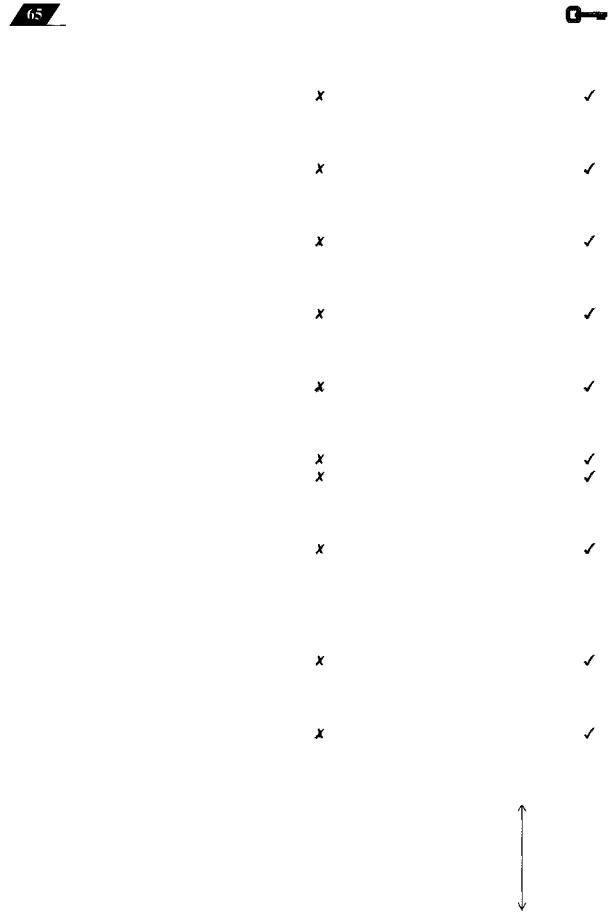
Writing Test Hints
10 POINT GRAMMAR CHECKLIST
1.Check for missing or incorrect articles:
"5% ofpopulation of the UK is..." |
"5% ofthe population of the UK is..." |
2.Check the 3rd person singular 's' agreement in the present tense:
".. she want to go to university..." |
"... she wants to go to university..." |
3.Check that your verbs are correct (in the active tense and passive voice):
"In 1945 the war end ..." |
"In 1945 the war ended..." |
4.Check that your verb forms are correct:
"They have been tried to..."
"They have been trying to. ."
5.Check all your subject-verb agreements:
"...poorcountries has suffered." |
" p o o rcountrieshavesuffered..." |
6.Check your countable and uncountable nouns:
"Most student do not wish to... |
" |
"Most students do not wish to..." |
but "Mostpeoples in the world... |
" |
"Mostpeople in the world.," |
7.Check that your pronouns refer to (previously mentioned) nouns:
"He wants to go to university..." |
"He wants to go to university ." |
(it "a student" is not mentioned before) |
(if "a student" is previously mentioned) |
Note that pronouns can come before the nouns they substitute for, but this is not as common.
8.Check that your prepositions are correct:
"The company was interested at..."
"The company was interested in ..."
9.Check that your parts of speech are correct:
"... it was a destruction act,,," (noun) |
" if was a destructivea c t . "(adj.) |
10. Check that your conditional forms are correct:
Zero: |
If + present tense |
..., + present tense + infinitive... |
always |
|
1st: |
If+present tense |
..., + will (may, might, could etc.) + infinitive ... |
maybe |
|
2nd |
If + past simple |
tense |
+ would (may,might,could + infinitive) |
maybe not |
|
continuous |
|
|
|
|
|
|
|
|
3rd |
If + past perfect tense |
..., + would have (may have etc.) + past participle ... |
did not occur |
|
Leave up to 5 minutes at the end of the test to read your work again with this checklist in mind. Whenever you write, in the IELTS test and for practice, you should always check for errors.
53
